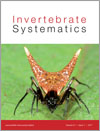
Invertebrate Systematics
Volume 31 Number 1 2017
IS16059Advancing genomics through the Global Invertebrate Genomics Alliance (GIGA)
Genomics is a burgeoning science which will soon generate up to zetta base pairs of DNA data per year. The present paper describes research frameworks and new portals to sequence data set up by the Global Invertebrate Genomics Alliance, which can facilitate comparative genomics. This cooperative, bottom-up approach will advance the characterization of genomic biodiversity in non-insect, mostly aquatic invertebrates.
IS16059 Abstract | IS16059 Full Text | IS16059PDF (339 KB) | IS16059Corrigendum (339 KB) | IS16059Supplementary Material (271 KB)
IS15062Finding hot singles: matching males to females in dimorphic spiders (Araneidae: Micrathena) using phylogenetic placement and DNA barcoding
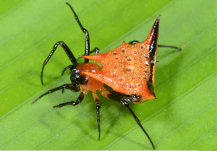
Males and females of some spiders are so different that it is often difficult to tell if they belong to the same species or not. Using DNA sequences and phylogenetic relationships, we suceed in matching males and females of some poorly known species of spiny South American orb-weaving spiders. Our study exemplifies how taking evolutionary relationships into account might help understanding the most basic aspects of biodiversity. Photograph: Micrathena yanomami, by A. Anker.
IS16020Carnivorous sponges (Porifera : Demospongiae : Poecilosclerida : Cladorhizidae) from the Drake Passage (Southern Ocean) with a description of eight new species and a review of the family Cladorhizidae in the Southern Ocean
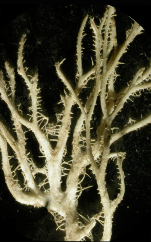
Carnivorous sponges (family Cladorhizidae) are a fascinating group but, since they occur mainly in deep-water, remain poorly known. A collection was made from the Drake Passage, Southern Ocean and from this eight new species are described. Biogeographic analysis shows that the Cladorhizidae are the second most species rich Demosponge family in the Southern Ocean, additional studies of seamount habitats are required to increase our knowledge. Photograph: Asbestopluma (Helophloeina) keraia, sp. nov., by K. Hendry.
IS16032A new phoronid species, Phoronis embryolabi, with a novel type of development, and consideration of phoronid taxonomy and DNA barcoding
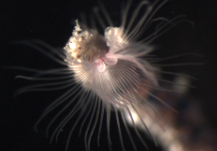
Phoronida is a group of marine invertebrates, whose taxonomy is poor developed. A new phoronid species Phoronis embryolabi Temereva, Chichvarkhin, 2016, which has an unusual type of development – viviparity of larvae, has been described by morphological and molecular methods. For future development of phoronid taxonomy, the type of development should be considered as one of the main characteristic. Photograph: Phoronis embryolabi, sp. nov., by E. Temereva.
IS16042Placing the forgotten: on the positions of Euenchytraeus and Chamaedrilus in an updated enchytraeid phylogeny (Clitellata : Enchytraeidae)
The enchytraeid genus Cognettia was recently split into Euenchytraeus and Chamaedrilus, and representatives of Euenchytraeus have never been included in phylogenetic studies. Here we test if these two taxa are separate lineages by re-assessing the phylogeny of the family Enchytraeidae, involving a broad sample of genera. We find support for the separation of Euenchytraeus and Chamaedrilus but their exact relationship with the closely related Stercutus is not completely resolved.
IS15050Cladistic analysis of the family Nomoclastidae with descriptions of a new genus and eight new species (Opiliones, Laniatores)
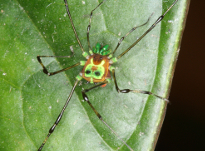
Nomoclastidae, a recently ranked family of harvestmen from the Neotropical region is revised. A morphological relationship hypothesis for its species is proposed and a new genus and eight new species are described. This paper improves the knowledge of this underestimated family and discusses the mud nest reproductive site, a characteristic behaviour more widespread than previously known. Photograph: Callcosma abrapatricia, sp. nov., by R. Pinto-da-Rocha.



